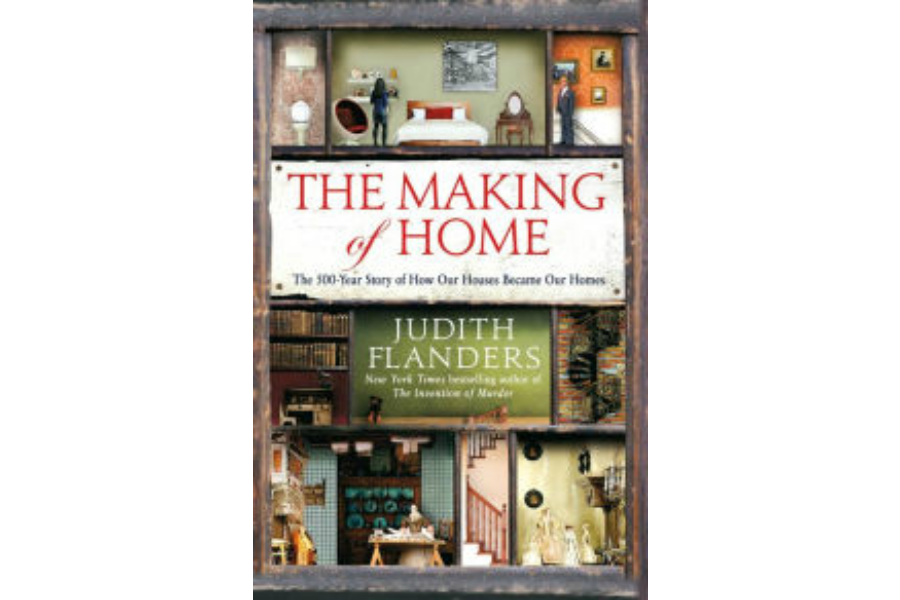'The Making Of Home' asks: How did houses become homes?
Loading...
We live on the bottom rung of a Boston three-family “triple-decker.” On three sides, you can almost reach out our windows and touch the other old apartment buildings that almost surround us in our urban community.
But it’s home. And it’s just as dear to us as the homes of some our friends – fancy suburban dwellings as big as mansions – are to them. Judith Flanders attempts to explain this essence of home in her latest book: The Making of Home: The 500-Year Story of How Our Houses Became our Homes. She examines how homes became “special places” and how they have “changed and developed over the span of modern history.”
Flanders has authored other books that explore broad topics in depth. She wrote “The Victorian City” and The New York Times bestseller “The Invention of Murder.” But home is a topic so broad it begs the question of how one book that focuses largely on social conditions and the evolution of physical aspects of the home could conceivably satisfy her ambitions.
Of necessity, she limits the scope of her discussion. The story she tells is almost entirely about Western Europe and North America – particularly Britain, the United States, the Netherlands, and Germany. And there is little information about contemporary homes, and how technology and demographics have transformed the way we live today.
Meanwhile, she makes only limited use of literature to elucidate the changing nature of home. As a result, the specifics of her discussions must shoulder much of the task of showing how houses became homes.
That said, she visits and revisits what is one of the most famous stories about being away from home, and shipwrecked on an island – “Robinson Crusoe” – which she calls “the first book to treat the details of ordinary domestic life as though they were as gripping as a disaster at sea.”
Flanders starts with a wide-ranging chapter on marriage and families, and how the industrial revolution transformed the roles of marriage partners, their lives and, hence, the family home. As Flanders later discusses in more detail, work, which before had been a cooperative effort by husband and wife, eventually moved out of the home. Meanwhile, families gradually were “no longer economic units of survival” but “symbols of human emotional investment.”
Flanders says that by the late 19th century, with men working elsewhere, “the woman’s ability to keep house became central: it reflected her value.” Home became where children were nurtured and where men could gain comfort and restoration. But it also was where women worked extremely hard, without the recognition that comes from receiving a paycheck.
In a particularly telling segment, Flanders comments with regard to the working class that “it is hard to comprehend the sheer labour, and time, involved in keeping [house]. It has been estimated that three to four hours were spent daily on food preparation.“ And food preparation was only part of the routine. “In many rural areas of the USA, this lifestyle remained standard throughout the nineteenth, and in some places into the twentieth, century."
In the second part of her book, Flanders focuses on the evolution of the nitty-gritty details of home: She examines hearth and heat, candles and light, running water and indoor plumbing. “Water, sewage, gas, electricity – these technologies connected the house to the networks of modern life around them, and they also enforced standardization on them,” she notes.
In this section Flanders finally moves to the suburbs. She tells how the masses of simple cookie-cutter homes William Levitt, the “King of Suburbia,” built after World War II have given way to communities with old-style architecture – and all the amenities of a modern city.
But Flanders never entirely succeeds in defining how houses have become homes. She provides illuminating discussions about evolving home life as impacted by societal and economic changes. Some segments, for their value in understanding home traditions from the past, beg to be broken off and expanded into their own books.
But her effort doesn’t entirely hold together. And, moreover, there isn’t a satisfying sense of fully understanding how living spaces started to transform into the entity most us love so dearly – the place where our hearts feel at home. Nonetheless, Flanders has written a book that is chock-full of absorbing information that will change how readers think about and understand their own homes – whether they are squeezed into a city apartment or lost in a multi-room manor.
David Hugh Smith is a writer from Brookline, Mass.








